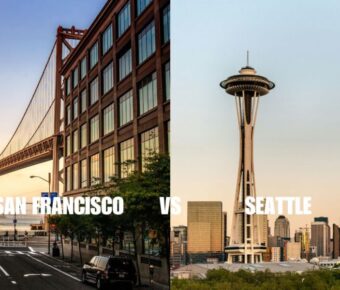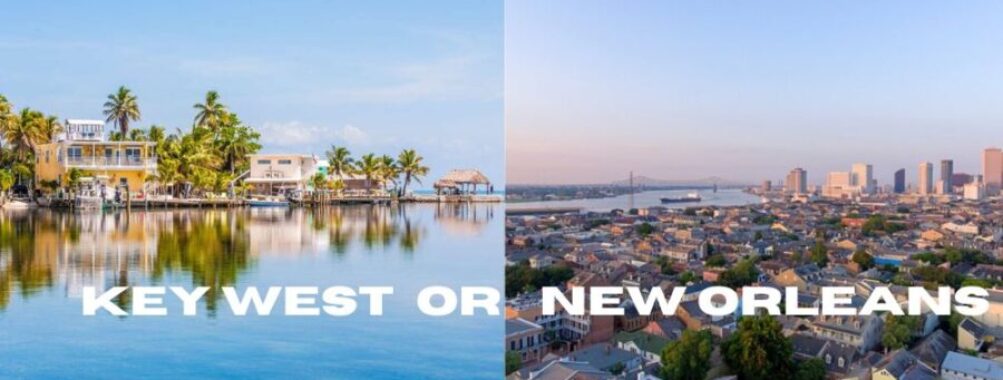
Key West vs New Orleans: Battle of America’s Most Vibrant Coastal Party Towns
Key West and New Orleans stand out as two of America’s most unique vacation spots, each with its own special charm. These cities blend history, culture, and laid-back vibes in totally different ways. Key West is ideal for 5-7 day trips with its beaches and water activities, while New Orleans packs enough excitement for a perfect 2-3 day getaway focused on food, music, and culture.
Both places attract visitors who love good food and fun times, but they offer different experiences. Key West brings together Florida’s island life with colorful streets and seafood spots, while New Orleans serves up Louisiana’s famous Creole cuisine and world-class jazz scenes. Tourists can find great entertainment walking down Key West’s Duval Street or exploring New Orleans’ historic French Quarter.
Table of Contents
- Geographical Overview and Climate
- Historical Context and Influence
- Key West History
- New Orleans History
- Cultural Highlights and Entertainment Options
- Music and Festivals
- Art and Architecture
- Culinary Delights and Dining Experiences
- Local Cuisine in Key West
- Famous New Orleans Eateries
- Lifestyle and Living
- Cost of Living
- Education and Population Diversity
- Recreational Activities and Tourism
- Outdoor Adventures in Key West
- Shopping and Parades in New Orleans
- Frequently Asked Questions
- What are the distinct cultural attractions in Key West compared to New Orleans?
- How does the culinary scene in Key West differ from that of New Orleans?
- Which city, Key West or New Orleans, offers a better atmosphere for a family vacation?
- What are the seasonal weather differences between Key West and New Orleans that might affect travel plans?
- Can you compare the nightlife experiences of Key West and New Orleans?
- How does the overall cost of visiting Key West compare to a trip to New Orleans?
- Book Your Dream Experience
- More Travel Guides
Geographical Overview and Climate
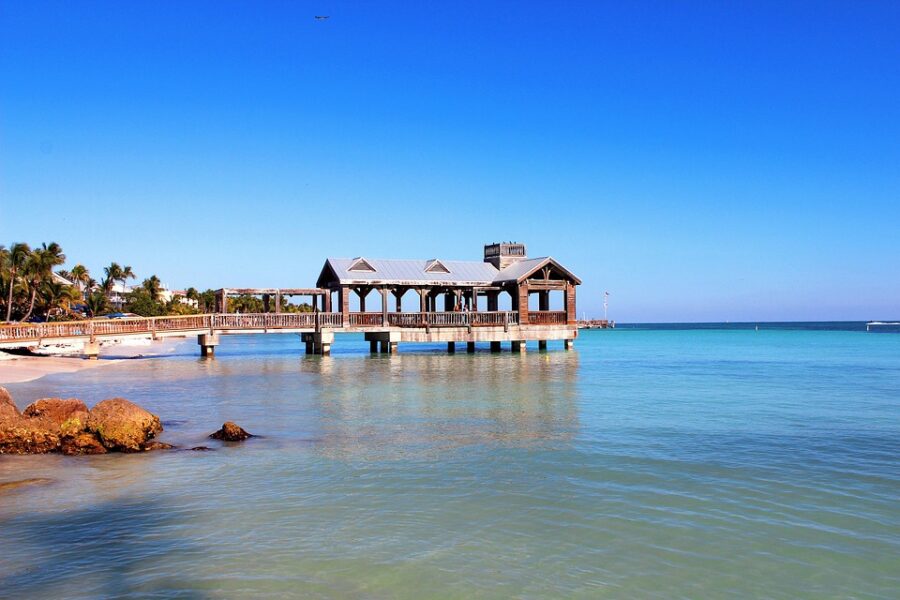
Key West sits at the southernmost point of the Florida Keys, surrounded by the warm waters of the Gulf of Mexico and Atlantic Ocean. Meanwhile, New Orleans sprawls across southeastern Louisiana, nestled between Lake Pontchartrain and the mighty Mississippi River.
The distance between these two unique cities spans about 642 miles as the crow flies. Both spots enjoy warm weather year-round, but their climate patterns differ quite a bit.
Book a hotel in Key West during winter to enjoy perfect beach weather, with sunny days and temperatures rarely dropping below 60°F. The city sees about 260 sunny days yearly, making it a true sun-seeker’s paradise.
New Orleans gets more rain – about 63.5 inches yearly compared to Key West’s 43.8 inches. The Big Easy experiences a humid subtropical climate with hot summers and mild winters. Afternoon thunderstorms pop up frequently during summer months.
Both cities face hurricane risks from June through November. Key West’s location makes it more vulnerable to direct hits, while New Orleans deals with flooding challenges due to its position below sea level.
Plan your trip around September and October for the most pleasant temperatures in New Orleans. These months bring less humidity and temperatures in the mid-70s to low 80s.
Historical Context and Influence
Both Key West and New Orleans emerged as major port cities in the 19th century, shaping America’s maritime trade and cultural development along the Gulf Coast. Each city’s unique past created distinct identities that remain visible today.
Key West History
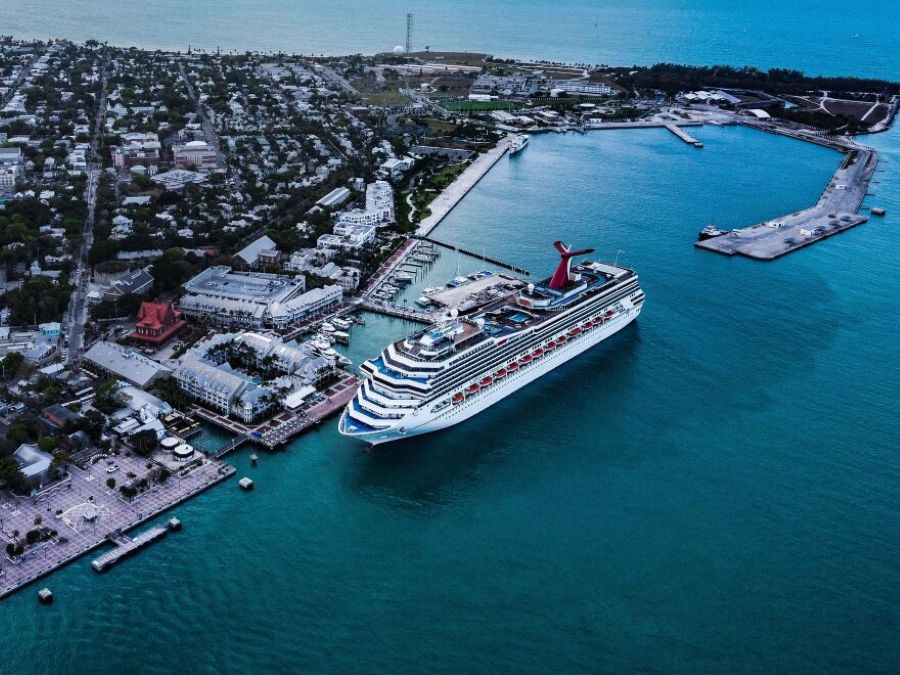
Key West’s deep-water port was among the most important between New Orleans and Virginia in the 1800s. This natural advantage helped the small island grow into Florida’s largest city during its early years.
Ships from around the world stopped at Key West’s harbor, bringing wealth, jobs, and a mix of cultures to the island.
The city also became a hub for fishing, shipwreck salvage, and sea trade. These industries attracted sailors, merchants, and workers from the Caribbean islands, creating Key West’s diverse population.
New Orleans History

French colonists founded New Orleans, and the city grew into a vital trade center where European, African, and Caribbean cultures mixed. The city’s French Quarter stands as a testament to its colonial roots.
The War of 1812’s Battle of New Orleans marked a turning point. This American victory strengthened the young nation’s hold on the Mississippi River.
Steam-powered boats transformed New Orleans in the 1800s. The city became North America’s busiest cotton port, linking southern plantations to global markets.
The city’s unique blend of French, Spanish, and American influences created distinctive architecture, music, and food traditions that draw visitors today.
Cultural Highlights and Entertainment Options
Both cities pulse with distinct cultural energy and endless entertainment possibilities, from world-class music scenes to stunning historic architecture that tells stories of their rich past.
Music and Festivals

New Orleans stands as the birthplace of jazz, with live music spilling out of French Quarter venues every night. The city’s musical legacy lives on through events like Jazz Fest and Mardi Gras, where brass bands parade through historic streets.
Key West’s music scene centers around Duval Street, where you’ll find laid-back tiki bars featuring tropical rock and reggae beats. Local musicians often play acoustic sets during sunset celebrations at Mallory Square.
The musical differences reflect each city’s character – New Orleans delivers sophisticated jazz and blues in historic clubs, while Key West offers casual beach tunes in open-air bars.
Art and Architecture
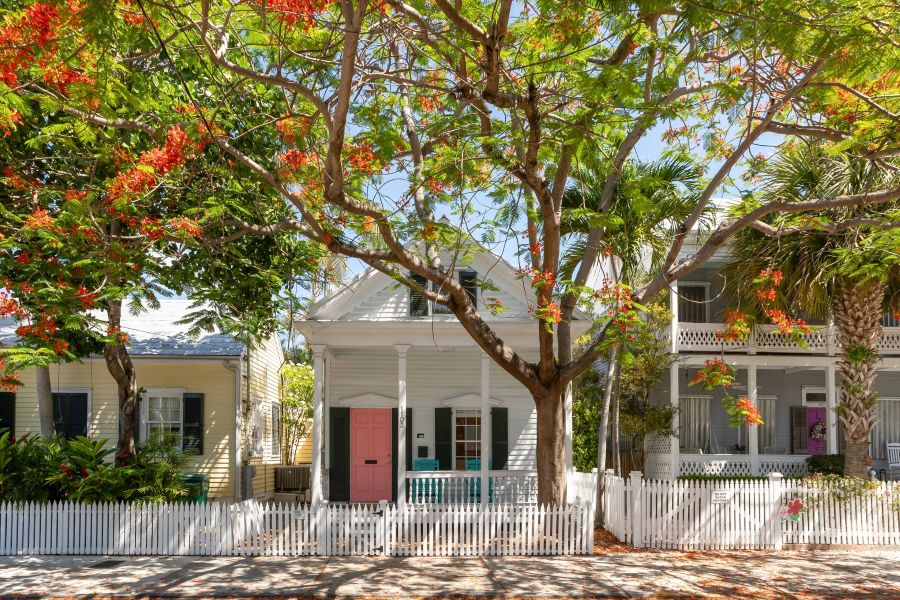
New Orleans showcases French Colonial and Creole architectural styles throughout the French Quarter. Cast-iron balconies and colorful facades create an artistic display along streets like Bourbon Street.
Key West features the largest collection of wooden Victorian homes in America, known as “Conch Houses“. These pastel-colored buildings with wraparound porches line the historic district.
Both cities support thriving art communities. New Orleans’ Royal Street hosts prestigious galleries in centuries-old buildings. Meanwhile, Key West’s galleries focus on tropical themes and local artists, with many spaces clustered near Duval Street.
The streets themselves serve as open-air museums, with local artists setting up easels to capture iconic scenes in both destinations.
Culinary Delights and Dining Experiences
Both cities offer unique food scenes that reflect their rich cultural heritage, with fresh seafood playing a starring role in their local specialties.
Local Cuisine in Key West
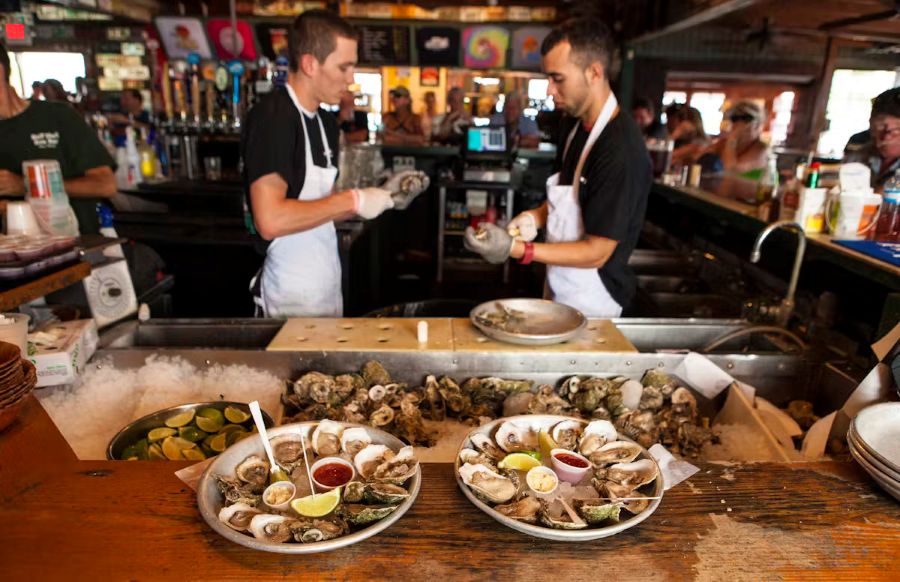
Fresh seafood rules the dining scene in Key West. The island’s signature dish, conch fritters, combines local seafood with Caribbean spices for a crispy, flavorful treat.
Popular Key West seafood spots:
- Half Shell Raw Bar – known for fresh oysters
- A&B Lobster House – famous for Florida spiny lobster
- Eaton Street Seafood Market – catch of the day specials
Pink shrimp caught in local waters appear on many menus. These sweet, tender shrimp taste great in everything from pasta to tacos.
Cuban influences show up in classic dishes like Cuban sandwiches and ropa vieja. The island’s Cuban coffee shops serve strong cafecito perfect for hot afternoons.
Famous New Orleans Eateries
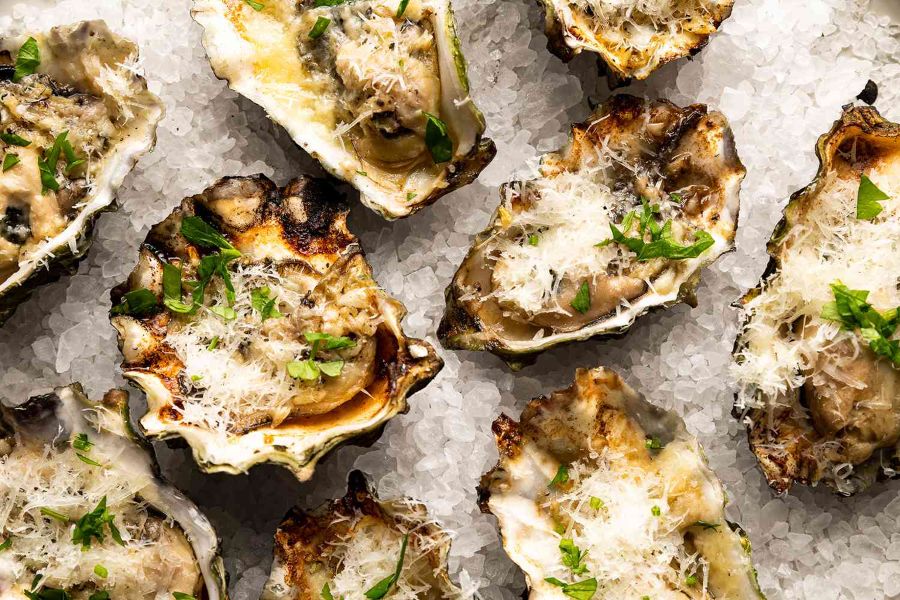
Creole and Cajun flavors define New Orleans cooking. Seafood gumbo, jambalaya, and crawfish étouffée showcase the city’s love of rich, spicy foods.
Must-try New Orleans dishes:
- Chargrilled oysters at Drago’s
- Po’ boys at Parkway Bakery
- Red beans and rice at Dooky Chase’s
- Beignets at Café du Monde
The French Quarter houses many historic restaurants. Antoine’s, opened in 1840, serves classic French-Creole dishes in elegant dining rooms.
Local seafood shines in dishes like BBQ shrimp and crawfish boils. Spring brings crawfish season, when restaurants host traditional boils with corn and potatoes.
Lifestyle and Living
Daily life differs dramatically between these two coastal cities, from the cost of basic necessities to the unique cultural makeup of each community.
Cost of Living
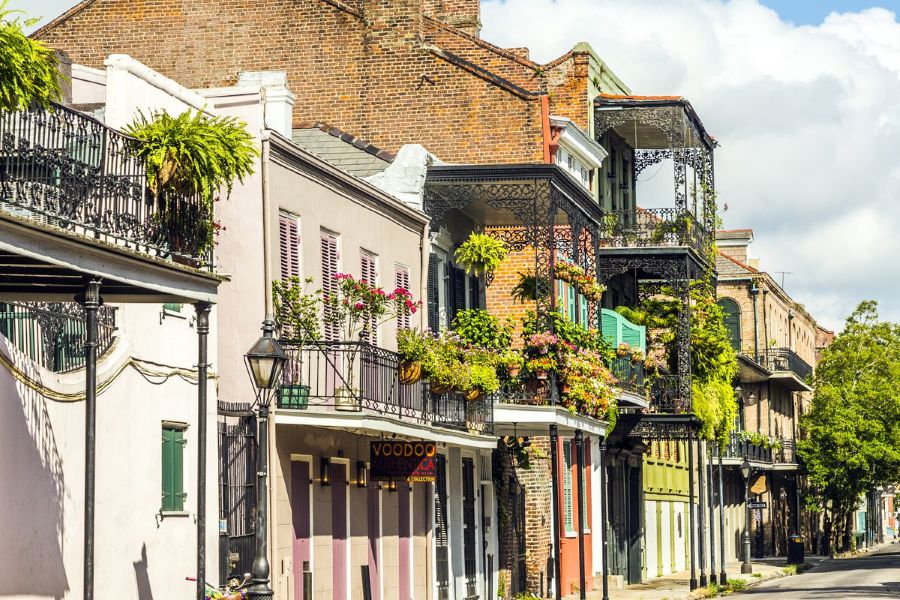
Living expenses in New Orleans run much lower than Key West. Housing costs stand out as the biggest difference – New Orleans homes cost 74.8% less than Key West properties. A typical 2-bedroom apartment in New Orleans rents for around $1,200, while similar units in Key West often exceed $3,000.
Groceries, utilities, and daily expenses hit your wallet harder in Key West too. The island location means higher prices for basic goods that must be shipped in.
Transportation costs vary between the cities. New Orleans residents face longer commute times – about 11 minutes more than Key West drivers. The compact size of Key West makes getting around easier.
Education and Population Diversity

Both cities shine with rich cultural diversity shaped by their unique histories. New Orleans brings together French, African, Caribbean and American influences in its neighborhoods and schools.
Key West’s island culture blends Cuban, Caribbean and American traditions. The city attracts an artistic crowd, with many galleries and creative spaces dotting the streets.
Public schools in New Orleans serve a larger student population across more campuses. Key West has fewer schools but maintains good student-teacher ratios thanks to its smaller size.
Recreational Activities and Tourism
Both cities offer unique activities that create unforgettable vacation experiences. New Orleans buzzes with cultural events and shopping, while Key West shines with water-based adventures and beach activities.
Outdoor Adventures in Key West
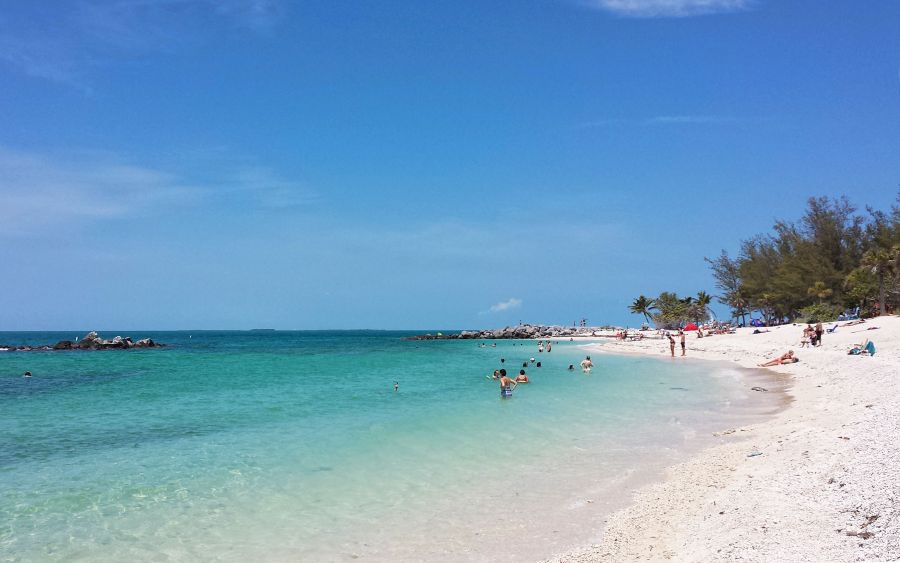
Key West’s crystal-clear waters make it perfect for water sports and activities. Visitors can spend their days snorkeling through vibrant coral reefs or diving to explore shipwrecks.
Sunset sails around the island give tourists amazing views of the coastline. The boats often serve drinks and snacks while cruising past landmarks.
Mallory Square comes alive each evening for the Sunset Celebration. Street performers, food vendors, and artists gather as the sun dips below the horizon.
The beaches in Key West offer calm waters for swimming and paddleboarding. Smathers Beach and Fort Zachary Taylor Beach stand out as local favorites for sunbathing and picnicking.
Shopping and Parades in New Orleans

The French Quarter’s shops overflow with unique finds, from local art to antiques. Royal Street features high-end boutiques, while Decatur Street specializes in quirky souvenirs.
Book guided tours to explore the Quarter’s hidden gems. Local guides know the best spots for authentic New Orleans treasures.
Mardi Gras brings spectacular parades with elaborate floats and costumes. Krewes toss beads and trinkets to excited crowds lining the streets.
The city hosts festivals year-round. Jazz Fest and French Quarter Fest fill the streets with music, food vendors, and celebration.
Frequently Asked Questions
Both Key West and New Orleans give visitors distinct experiences with their mix of culture, food, nightlife, and weather patterns that shape trip planning throughout the year.
What are the distinct cultural attractions in Key West compared to New Orleans?
New Orleans stands out with its French Quarter architecture, jazz clubs, and historic cemeteries. The city pulses with a mix of French, African, and Creole influences seen in its art galleries and street performances.
Key West’s cultural scene focuses on its maritime heritage at places like the Mel Fisher Maritime Museum. The Ernest Hemingway Home draws literature fans, while the Mallory Square sunset celebration shows off the island’s artistic spirit.
How does the culinary scene in Key West differ from that of New Orleans?
New Orleans serves up Creole and Cajun dishes like gumbo, jambalaya, and beignets. The city’s restaurants range from historic spots like Antoine’s to neighborhood po’ boy shops.
Key West specializes in fresh seafood and Caribbean-influenced dishes. Stone crab, conch fritters, and key lime pie top many menus. Small seafood shacks and waterfront restaurants define the dining scene.
Which city, Key West or New Orleans, offers a better atmosphere for a family vacation?
Key West tends to be more family-friendly with its beaches, snorkeling trips, and marine activities. The Key West Aquarium and Butterfly Conservatory appeal to kids of all ages.
New Orleans offers educational experiences through its many museums and streetcar rides. Families enjoy spots like the Audubon Zoo and City Park, though some areas get rowdy at night.
What are the seasonal weather differences between Key West and New Orleans that might affect travel plans?
Key West enjoys steady warm temperatures and sunshine year-round. Winter brings pleasant 70-degree days, while summer stays hot with cooling ocean breezes.
New Orleans faces more weather extremes. Summers bring intense heat and humidity with afternoon thunderstorms. Winter temperatures can drop into the 40s, and hurricane season runs from June through November.
Can you compare the nightlife experiences of Key West and New Orleans?
New Orleans’ nightlife centers on Bourbon Street with its live jazz clubs, bars, and dancing spots. The music scene spans traditional jazz to modern beats across multiple neighborhoods.
Duval Street in Key West offers a more laid-back bar scene. Live music venues feature island tunes and rock covers. Sunset cruises and waterfront bars create a tropical party vibe.
How does the overall cost of visiting Key West compare to a trip to New Orleans?
Housing and lodging cost more in Key West, especially during peak winter season. Hotels on the island often charge premium rates for their location.
In contrast, New Orleans offers more budget-friendly accommodations and dining options. Transportation costs less with streetcars and walkable neighborhoods. Both cities have free attractions to help balance costs.
